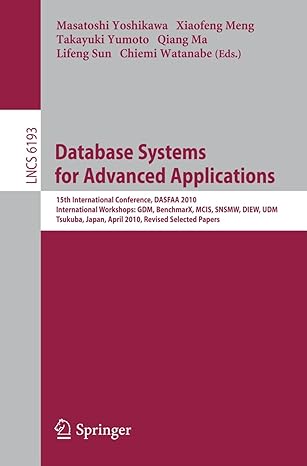Question
Use your stack template from part 1 to apply reverse Polish notation (RPN (Links to an external site.)Links to an external site.) as it was
Use your stack template from part 1 to apply "reverse Polish notation" (RPN (Links to an external site.)Links to an external site.) as it was used in the earliest electronic calculators. In the 1960's, digital processors and memory were expensive, big, and slow. Algorithms for parsing, that we have in modern calculators, were just not feasible because of the memory and processing power required.
Calculators like the HP-35 (Links to an external site.)Links to an external site. simplified math operations by applying RPN. They worked like this -- operands (Links to an external site.)Links to an external site. for plus, minus, multiply, and divide got entered and stored in a stack. Then operations (Links to an external site.)Links to an external site. got entered, that would pop the top two values from the stack, do the operation, and push the result back to the stack. So one plus one worked like this: 1 [ENTER] 1 [ENTER] -- now there are two values in the stack. Then + [ENTER] -- the two 1's are popped, added, and 2 gets put onto the stack. Final stack size, 1, and no parsing required!
Stack size was large enough for more complex calculations, like (1 + 2) / (4 + 5). Since the result of an operation gets put onto the stack and not just simply displayed, here's how this more complicated expression worked: 1 [ENTER] 2 [ENTER] + [ENTER] -- now 3 is on the stack, where it will remain while this is done: 4 [ENTER] 5 [ENTER] + [ENTER], which puts 9 onto the stack above the previous 3. Stack size, 2. Now just one more operation: / [ENTER], and 0.3333333 replaces the popped 3 and 9 on the stack. To recap, 1 [ENTER] 2 [ENTER] + [ENTER] 4 [ENTER] 5 [ENTER] + [ENTER] / [ENTER].
Write your app as a C++ console program. In a loop, process input from the user. If a plus (+), minus (-), multiply (*), or divide (/) symbol is entered, perform the operation with the two values at the top of the stack, and push the result onto the stack. If a Q or q is entered, break from the loop. Otherwise, apply atof to the entry (without checking to see if it's a number) and push its result onto the stack. Allow for floating point values.
DO NOT worry about division by zero or any other numeric validation. DO avoid popping from the stack when the stack is empty -- for example, if the user enters a plus operator, and there are fewer than two values in the stack, simply ignore the user's request and loop back to wait for the next input.
You may allow the user to type multiple entries on the same line of input, space-separated (before pressing ENTER), if you wish. Like 1 2 + 4 5 + / [ENTER]
Include the current stack contents in the input prompt (see below). Formatting of output precision is not required or recommended.
Example (computer prompts in bold). Your program should match these RESULTS, formatted as you choose.
Example: five plus six Enter: 5 [ENTER] Enter: 5 6 [ENTER] Enter: 6 5 + [ENTER] Enter: 11 Example: ten minus one Enter: 10 [ENTER] Enter: 10 1 [ENTER] Enter: 1 10 - [ENTER] Enter: 9 Q [ENTER] Example: one divided by two Enter: 1 [ENTER] Enter: 1 2 [ENTER] Enter: 2 1 / [ENTER] Enter: 0.5 Example: add with empty stack Enter: + [ENTER] Enter: | Example: Pi times the radius squared Enter: 3.14159 [ENTER] Enter: 3.14159 18 [ENTER] Enter: 18 3.14159 18 [ENTER] Enter: 18 18 3.14159 * [ENTER] Enter: 324 3.14159 * [ENTER] Enter: 1017.88 Example: (1+2)/(3+4) Enter: 1 [ENTER] Enter: 1 2 [ENTER] Enter: 2 1 + [ENTER] Enter: 3 3 [ENTER] Enter: 3 3 4 [ENTER] Enter: 4 3 3 + [ENTER] Enter: 7 3 / [ENTER] Enter: 0.428571 Example: add with one value in stack Enter: 1 [ENTER] Enter: 1 + [ENTER] Enter: 1 |
Order matters. Note that 10 [ENTER] 1 [ENTER] - [ENTER] is 9, not -9. and 1 [ENTER] 2 [ENTER] / [ENTER] is 0.5, not 2. Make sure your program gives the same numeric results as in the samples above.
Step by Step Solution
There are 3 Steps involved in it
Step: 1

Get Instant Access to Expert-Tailored Solutions
See step-by-step solutions with expert insights and AI powered tools for academic success
Step: 2

Step: 3

Ace Your Homework with AI
Get the answers you need in no time with our AI-driven, step-by-step assistance
Get Started


